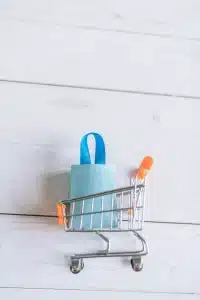The Evolution and Influence of Toy Packaging on Consumer Behavior
Toy packaging has come a long way over the years. Not only does it serve as a protective cover for the actual toy, but it has emerged as a powerful marketing tool that significantly influences consumer behavior. Let’s dive into the evolution of toy packaging and explore the various features that make it so impactful:
1. Eye-catching Designs
The era of plain and generic toy packaging is long gone. Nowadays, toy companies invest heavily in creating visually appealing designs that instantly grab the attention of consumers. Bright colors, bold typography, and captivating images are used to create packaging that stands out on store shelves and piques the curiosity of potential buyers.
2. Interactive Elements
Toy packaging has become more than just a static cover. Many brands now incorporate interactive elements to engage consumers and enhance their overall experience. From pull tabs, to hidden compartments, to QR codes that lead to additional digital content, these features create a sense of discovery and excitement, increasing the desirability of the toy.
3. Informative Product Details
Toy packaging has evolved to provide consumers with detailed information about the product. From age recommendations to safety warnings, from features to functionalities, manufacturers understand the importance of transparency and strive to clearly communicate the value proposition of the toy through the packaging. This allows consumers to make informed decisions, leading to higher satisfaction rates.
4. Storytelling and Branding
Effective toy packaging goes beyond showcasing the product itself. It tells a story and builds a brand image. Iconic characters, background narratives, and imaginative scenarios are utilized to connect with consumers on an emotional level. By tapping into the power of storytelling, toy packaging creates a lasting impression and develops a sense of loyalty towards the brand.
5. Sustainable and Eco-friendly Materials
In recent years, toy companies have recognized the importance of environmental consciousness. Many have shifted towards using sustainable and eco-friendly packaging materials in an effort to reduce their carbon footprint. Consumers are increasingly drawn to toys that come in packaging made from recycled materials or are easily recyclable. This eco-consciousness further influences the consumer buying behavior.
6. Personalization and Customization
Customizable toy packaging has gained popularity in recent years. Brands are now offering options for consumers to personalize the packaging with names, messages, or even photos. This creates a sense of ownership and uniqueness, making the toy more appealing to both children and gift-givers. Personalized toy packaging not only attracts attention but also enhances the overall value of the product.
7. Shelf Impact and POS Marketing
The role of toy packaging extends beyond the retail shelves. Point-of-sale (POS) marketing is crucial in capturing the attention of potential customers while they are making purchasing decisions. Eye-catching and persuasive packaging elements such as discount stickers, limited edition labels, or special offers strategically placed near the toy section can significantly influence consumer behavior, resulting in impulsive purchases.
Conclusion
Toy packaging has witnessed a remarkable evolution over the years, transforming from a mere protective cover to a powerful marketing tool. Eye-catching designs, interactive elements, informative product details, storytelling, sustainability, personalization, and POS marketing all contribute to shaping consumer behavior and influencing purchasing decisions. As the toy industry remains highly competitive, understanding the evolving nature of toy packaging is vital for toy companies looking to stay ahead in the market.





